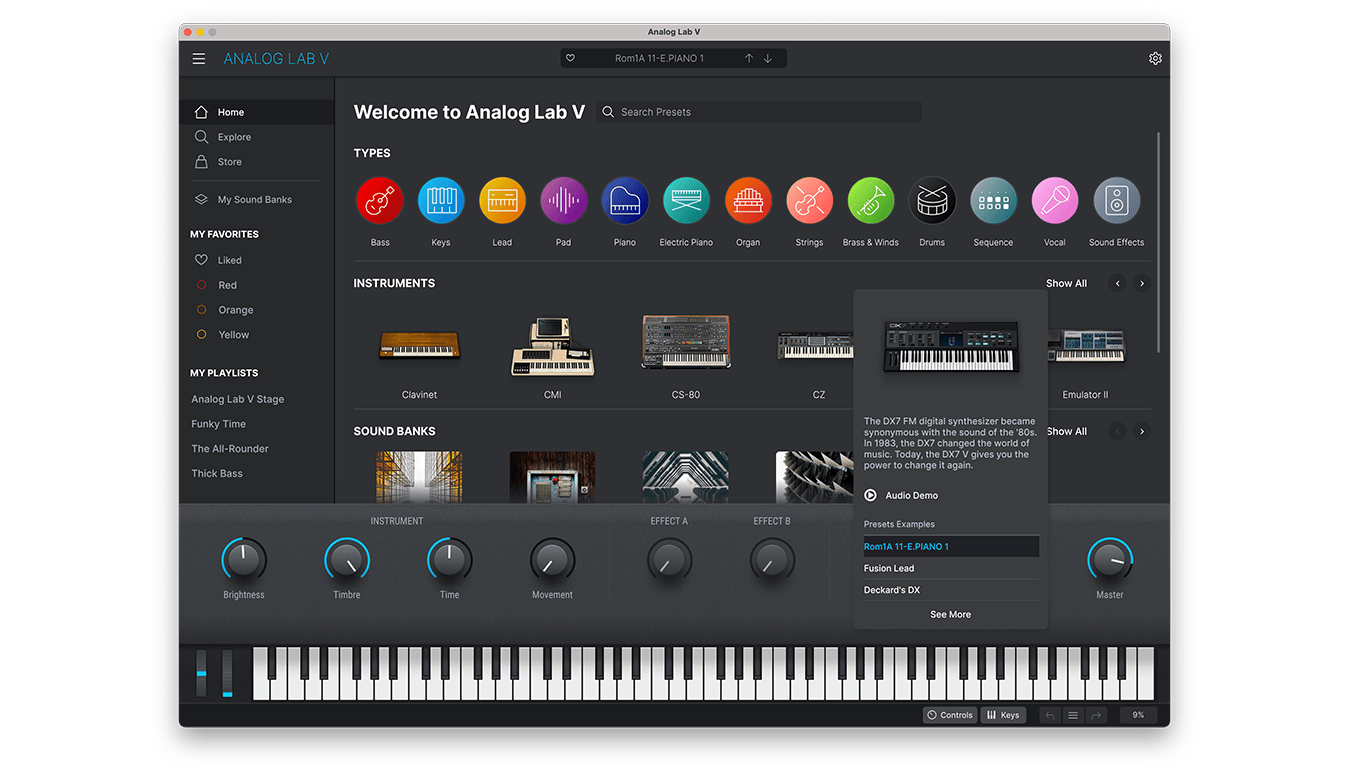
- #Arturia analog lab 64 bit how to
- #Arturia analog lab 64 bit manuals
- #Arturia analog lab 64 bit Patch
When I hover over a port labeled ‘CV,’ for example, I would love it if a tooltip popped up that said ‘Control Voltage,’ and I would love it even more if it included a short definition of what Control Voltage is and a few common uses. Next, it would be incredibly helpful if AAS created tooltips for everything.
#Arturia analog lab 64 bit Patch
It makes me feel like an even bigger idiot to repeatedly try and fail to patch two modules in a way that they can’t be patched, and feeling dumb doesn’t make me want to learn, it makes me want to quit. For one, when you’re attempting to patch two modules together, it would be extremely helpful if the ports you can’t patch together would be grayed out.
#Arturia analog lab 64 bit manuals
On the other hand, if you’re just starting out with modular synths and don’t have hours or possibly days to read manuals and watch videos, there are a few minor changes that could make Multiphonics CV-1 even better.
#Arturia analog lab 64 bit how to
The manual is extremely in-depth and has a different multi-page section for each module, plus a great tutorial video collection that walks you through how to build your first patch. The Patch Info module is a very cool touch, which acts as a note-taking space to help describe your patches to others, or even just to remind yourself what you were trying to do when designing a patch. It’s nimble and responsive, the patches load in fractions of a second, and there’s lots of fun presets to play around with. On the one hand, if you’re familiar with modular synthesis and how all the individual parts work, it is very simple and easy to operate. I’m pretty torn on how to rate the usability of Multiphonics CV-1. On the right-hand menu are MIDI settings and two master Effects controls for reverb and delay, which are both simple in operation and useful. They are also categorized into Leads, Sound Effects, Chords, and more. I counted nearly 200 factory patches that come with Multiphonics CV-1. To add a module, simply drag it from the menu or hit the plus button. In addition to the VCAs, LFOs, VCOs, and ADSRs you would expect in a modular synth, there is also a note-taking module called Patch Notes which allows patch creators to leave information about the design. Multiphonics CV-1 comes with 30 modules arranged into 7 categories: Audio Generators, Clocks and Sequencers, CV Generators, Filters, Mixers, Signal Processors, and VCAs. Clicking on the virtual patch ports and dragging between them creates a cable connection, and dragging a connection to empty space or right-clicking and selecting “delete cable” removes connections. There is a size constraint for each row which limits the total modules based on their individual footprint, but with three rows to work with there is plenty of space for all but the craziest modular masterpieces. Right-clicking a module and hitting “remove” deletes it and its connections from the rack. Dragging Modules from the right-hand menu onto the three rack rows arranges them neatly, and by clicking and dragging any module’s title it can be moved and the wires automatically untangled to retain their original routing in their new position. The central Module Rack is where all the magic happens in Multiphonics CV-1. It would take hours to describe each and every knob and feature in Multiphonics CV-1, but I’ll try to summarize without leaving anything important out: Module Rack






 0 kommentar(er)
0 kommentar(er)
